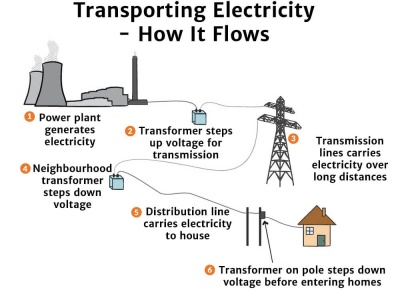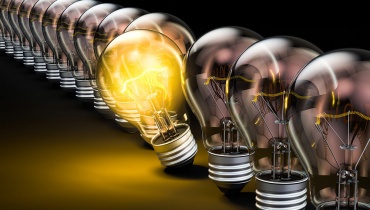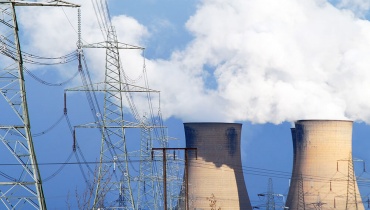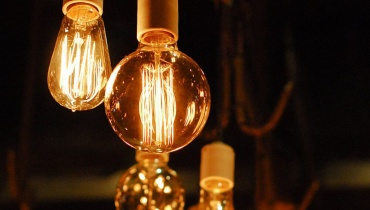How Electricity Flows
Straight Down the Line
In a Flash

The path that electricity takes from the power planet to your home.
How electricity flows
The electricity that flows to our homes is generated in power stations. From here, it flows through large transmission lines, which carry it to substations. Finally, distribution lines carry electricity from substations to houses, businesses, and schools like yours!
Burning Questions
How does electricity reach our homes?
Have you ever wondered how the electrical energy that powers all those devices in your home actually gets there? Here's the lowdown!
-
In power stations, large spinning turbines generate electricity, powered by wind, coal, natural gas, or water (hydropower).
-
The electrical current is sent through transformers, which increase the voltage so the power can be pushed over long distances.
-
The electrical charge is then carried by transmission lines held up by large towers, which stretch across huge distances.
-
From the transmission lines, the electricity reaches a substation, where the voltage is lowered so it can be sent on smaller power lines.
-
The electricity is then sent through distribution lines to your neighbourhood. Smaller transformers lower the voltage again so that the power is safe to use in our homes.
-
The electricity connects to your house, where it passes through a meter which measures the amount of electricity you use.
-
Finally, the electricity travels through wires inside the walls to the outlets and switches in your house - ready to power your devices!

Energy heats a lightbulb's wires, making the gas inside the bulb glow.
What is an electrical circuit?
Electricity travels in closed circuits. The word ‘circuit' comes from the word ‘circle', so you can think of it liked a closed loop. The electricity needs to have a complete path from the power station where it's generated, all the way to the wires in your home, and back again. If the circuit is open (i.e. there's a gap), the electricity can't flow.
Circuits in action:
-
When you turn on a light switch, you close the circuit, so the electricity can flow through the light and back into the wire.
-
When you turn the switch off, you open the circuit. This means no electricity can flow, so the light won't be on.
What about when a bulb burns out? When you turn a light switch on, the electricity flows through a tiny wire in the bulb, which gets very hot and makes the gas in the bulb glow. When the bulb burns out, the tiny wire has broken - this means the path (circuit) is broken, so no electricity can flow.
It's the same with your TV - when you turn it on, you're closing the circuit, so electricity flows to the TV set and causes it to turn on with pictures and sound.
What Do You Mean?

Power stations need fuel to create electricity.
Power stations are where electricity is generated.
Transformers increase or decrease the voltage of an electrical current.
Transmission lines carry high-voltage electrical current across the country.
A circuit is the path on which electricity flows - it must be closed in order for electricity to flow.
Speedy Summary

When you turn on a switch, the electricity is free to flow around the circuit and produce light in the lightbulb.
Electricity flows in a closed circle, called a circuit. To reach our homes, electricity travels from power stations, through transmission lines and distribution lines, until it flows into the wires that power our devices.
Teacher's Toolkit
Take this to the classroom!
Curriculum ready content.